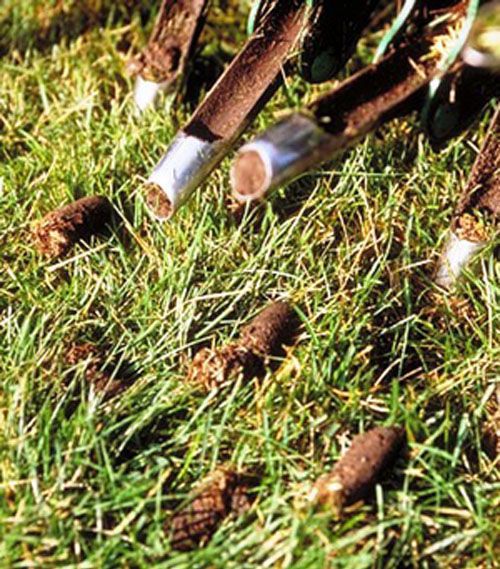For best results in lawn renovation, choose seed carefully
Published 12:00 am Friday, August 22, 2014
Fall is the best time of the year to seed cool season fescue lawns. This narrow window of opportunity during the fall promotes optimum root growth and development in fescue lawns. Seeding now provides optimum growth before the arrival of cold weather since seed germination can be slow during cold weather and often produces weak, thin turf.
Seed companies provide more than 50 different cultivars of turf-type fescues providing more than an ample selection. However, it’s impossible to carry them all, so most retail outlets and garden centers only carry four or five different cultivars or blends. Most retail outlets sell fescue blends or fescue/bluegrass mixtures in an effort to provide maximum seed quality. Local garden centers will also feature custom blend turf seed to homeowner’s needs — you can design your own blend.
It’s important to plant a blend of different turf type fescues each year. Commercial labels such as Scotts, Pennington, Rebel and Southern States often sell fescue products that are actually blends of three or more different types of fescue cultivars. Turf researchers generally recommend a blend of three or more different types of turf type fescues. The rationale is new cultivars are bred to adapt better to our growing conditions and often provide disease resistance. Planting single fescue cultivars often allows a fungus to spread freely, whereas a mixture of different fescue types will limit its spread.
Avoid planting turf blends that contain ryegrass. Annual and perennial ryegrass is very competitive and weakens fescue stands. These are often sold as “quick start” or contractor lawn seed. Check the contents carefully before purchase.
Apply fescue seed at 5-7 pounds per 1,000 square feet or about 220 pounds per acre. Apply half the seed to a given area, and then apply the remainder of the seed at a right angle to the previous application in an effort to guarantee thorough coverage.
Use half the normal seeding rate (3-4 pounds/1,000 square feet) when over-seeding thin or bare areas in existing turf. Core aerating before over-seeding is beneficial, allowing the seed to make contact with the soil, improving germination.
New lawns or highly compacted areas need to be plowed and raked to a depth of at least 6 inches to insure good seed penetration. Lime and fertilizer should be tilled into the soil at least 4 inches deep in an effort to put nutrients in the root zone of emerging grass seed. Spreading grass seed on hard, untilled soil always ends as a disaster.
Apply clean wheat straw as a mulch to cover bare ground areas. I really want to emphasis clean wheat straw with no seed heads. Germinating wheat in fescue lawns can be rather unattractive and may compete with emerging fescue.
Wheat straw mulch holds moisture, allowing seed to germinate quickly. Gently shake one to two bales of straw per 1,000 square feet. Be careful not to apply too much straw. After application, you should be able to see the bare ground through the mulch. Over-mulching produces thin, weak stands of turf.
Keep the soil moist for adequate germination. Water deeply to prevent sparse, inadequate root development. Irrigation may be needed two or three times per week during dry fall weather. Water less frequently when turf becomes established.
During typical fall weather, fescue will germinate in 14 days; however, as the soil temperatures begin to decline, so does seed germination. Fescue germination slows down in late October and November when hard frosts occur. Seeding within the next few weeks is essential for maximum turf growth.
Darrell Blackwelder is county Extension director, Rowan County Center, North Carolina Cooperative Extension





